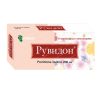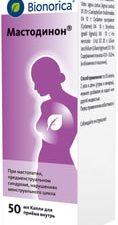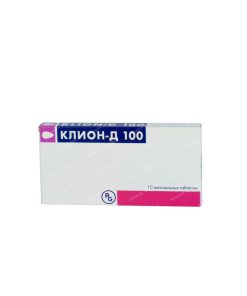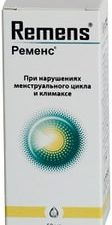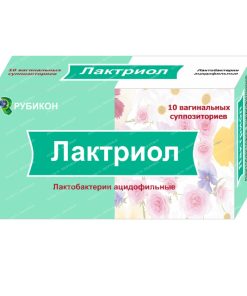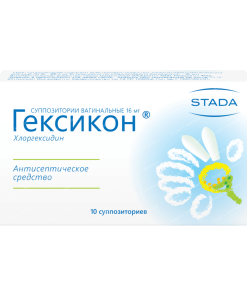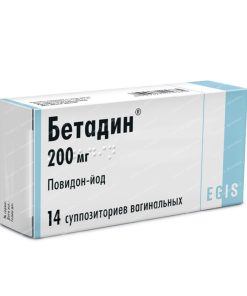Name:
Terzhinan tabl vag in strips in a pack. No. 6×1
Description:
Light yellow tablets with possible inclusions of darker or lighter shades, flat, oblong shape with chamfered edges and embossed in the form of the letter “T” on both sides. The main active ingredient is Ternidazole, Neomycin sulfate, Nystatin, Prednisolone sodium metasulfobenzoate, equivalent to prednisolone Release form Tablets Pharmacodynamics Combined drug for topical use in gynecology. It has antimicrobial, anti-inflammatory, antiprotozoal, antifungal effects. The excipients of Terzhinan were selected in such a way as to ensure the integrity of the vaginal mucosa and pH stability. Ternidazole – an antimicrobial drug, an imidazole derivative, reduces the synthesis of ergosterol (an integral part of the cell membrane), changes the structure and properties of the cell membrane. It has a trichomonacid effect, it is also active against anaerobic bacteria, in particular gardnerella. Neomycin is a broad-spectrum antibiotic from the aminoglycoside group. It acts bactericidal against gram-positive (Staphylococcus spp., Streptococcus pneumoniae) and gram-negative (Escherichia coli, Shigella dysenteriae, Shigella flexneri, Shigella boydii, Shigella sonnei, Proteus spp.) microorganisms; against Streptococcus spp., inactive. Microbial resistance develops slowly and to a small extent. Nystatin is an antifungal antibiotic from the group of polyenes, highly effective against yeast-like fungi of the genus Candida. Prednisolone is a dehydrated analogue of hydrocortisone, has a pronounced anti-inflammatory, anti-allergic, anti-exudative effect. Spectrum of antimicrobial activity Neomycin The prevalence of acquired resistance of microorganisms to antibacterial agents may vary geographically and over time for individual species of microorganisms. Therefore, it is necessary to have information about the resistance of microorganisms in this region, especially in the treatment of severe infections. These data can only indicate the degree of probable sensitivity of the bacterial strain to this antibiotic. Main strains sensitive to neomycin: Gram-positive aerobes such as Corynebacterium, Listeria monocytogenes and Staphylococcus meti-S, as well as some Gram-negative aerobes such as Acinetobacter baumannii, Branhamella catarrhalis, Campylobacter, Citrobacter freundii, Citrobacter koser Enterobacter aerogenes, Enterobacter cloacae, Escherichia coli , Haemophilus influenza, Klebsiella, Morganella morganii, Proteus mirabilis, Proteus vulgaris, Providencia rettgeri, Salmonella, Serratia, Shigella, Yersinia. Note: this spectrum corresponds to systemic antibacterial drugs. The concentration created locally with topical application is higher than in the systemic circulation. There are limited data on topical kinetics, local physicochemical conditions that may affect in situ drug activity. Pharmacokinetics Studies have not been conducted due to low systemic absorption. Indications for use Treatment of vaginitis caused by susceptible microorganisms, including: – bacterial vaginitis; – trichomoniasis of the vagina; – vaginitis caused by fungi of the genus Candida; – mixed vaginitis. Method of administration and doses Dosage: Intended for the adult population One vaginal tablet 1-2 times a day. Average duration of treatment: 10 days. The duration should be 20 days in case of confirmed mycosis. Method of application: Vaginally. It is recommended to wash your hands thoroughly before insertion, moisten the tablets by immersing them in water for 2-3 seconds, and then insert them into the vagina to a comfortable depth (it is easier to perform the procedure lying on your back, bending your knees), and remain in the accepted position for about 15 minutes. Minimal local moisture is required to dissolve the tablet. In case of vaginal dryness, the vaginal tablets may not dissolve completely. Practical advice: During the treatment, personal hygiene recommendations should be observed (cotton underwear, avoiding vaginal douche, not using sanitary tampons during the treatment period) and, if possible, any disease-provoking factors should be excluded. Treatment should not be interrupted during menstruation. Sexual partner(s) should be treated concurrently, whether or not they have clinical signs. Use during pregnancy and lactation The use of the drug during pregnancy and lactation is possible only on prescription in cases where the expected benefit to the mother outweighs the potential risk to the fetus. Pregnancy There are limited data on the use of this medicinal product during pregnancy. Considering that this preparation contains an aminoglycoside antibiotic, neomycin, which may be ototoxic, and the possibility of its systemic penetration, it is not recommended to use this dosage form during pregnancy. Breastfeeding There are no data on systemic absorption of the active substances from this dosage form into breast milk. Therefore, it is not recommended to use this drug during breastfeeding. Precautions As with any topical treatment, there may be slight absorption of various components (see section “Side Effects”). The use of a topical antibiotic may interfere with the action of other systemic antibiotics from the same or related group. The duration of treatment should be limited to reduce the risk of development of resistant organisms and superinfection by these organisms. Interaction with other drugs Associated with prednisolone: Undesirable combinations + Acetylsalicylic acid Increased risk of bleeding. Undesirable combination with anti-inflammatory doses of acetylsalicylic acid, greater than or equal to 1 g, in a single dose and / or greater than or equal to 3 g per day. Combinations requiring precautions for use + Anticonvulsant enzyme inducers Decrease in the level and effectiveness of corticosteroids in the blood by increasing their metabolism in the liver by the inducer. In patients with Addison’s disease treated with hydrocortisone and in the case of transplantation, the consequences are especially significant. Clinical and biological monitoring is recommended; and adjust the dose of corticosteroids during and after treatment with the enzyme inducer. + Isoniazid Reducing the level of isoniazid in the blood by increasing its metabolism in the liver and reducing the metabolism of glucocorticoids in the liver. + Rifampicin Reducing the level and effectiveness of corticosteroids in the blood by increasing its metabolism in the liver after interaction with rifampicin. In patients with Addison’s disease taking hydrocortisone and in the case of transplantation, the consequences are especially significant. Clinical and biological monitoring is recommended; and adjust the dose of corticosteroids during and after rifampicin treatment. + Other hypokalemic drugs Increased risk of hypokalemia. It is recommended to monitor the level of potassium in the blood with its correction, if necessary. + Digitalis preparations The toxic effect of digitalis contributes to hypokalemia. It is recommended to correct hypokalemia and conduct clinical, electrolytic and electrocardiographic monitoring. + Drugs that can cause Torsades de pointes (polymorphic ventricular tachycardia) Increased risk of ventricular arrhythmia, especially polymorphic ventricular tachycardia. It is recommended that correction of hypokalemia and clinical, electrolytic and electrocardiographic control monitoring be carried out before the introduction of the product. Combinations to be considered + Cyclosporine Enhanced effects of prednisolone, including Cushing’s syndrome, reduced tolerance to glucoxides (decreased clearance of prednisolone). + Acetylsalicylic acid Increased risk of bleeding. In combination with analgesic or antipyretic doses of acetylsalicylic acid greater than or equal to 500 mg administered and/or less than 3 g per day. + Non-steroidal anti-inflammatory drugs Increased risk of peptic ulcer and gastrointestinal bleeding. + Fluoroquinolones Increased risk of tendon disease and, in exceptional cases, tendon rupture, especially in patients receiving long-term corticosteroid therapy. Contraindications Hypersensitivity to active substances or any component of the drug. This drug is not recommended for use in combination with certain doses of acetylsalicylic acid (see section “Interaction with other drugs”). Composition Per 1 tablet Active ingredients: Ternidazole 0.2 g Neomycin sulfate 0.1 g or 65,000 IU Nystatin 100,000 IU Prednisolone sodium metasulfobenzoate 0.0047 g, equivalent to prednisolone 0.003 g Excipients: Wheat starch 0.264 g Lactose monohydrate up to 1.2 g Colloidal silicon dioxide 0.006 g Magnesium stearate 0.01 g Sodium carboxymethyl starch 0.048 g Overdose There are no data on cases of overdose. Side effect On the part of the immune system: hypersensitivity. From the skin and subcutaneous tissues: allergic dermatitis, rash, itching, urticaria. From the reproductive system and mammary glands: vaginal edema, vulvovaginal burning, vulvovaginal erythema, vulvovaginal pain, vulvovaginal itching. Storage conditionsStore at a temperature not exceeding 25 °C. Keep out of reach of children. Buy Terzhinan vaginal tablets No. 6×1 Price for Terzhinan vaginal tablets No. 6×1 Instructions for use for Terzhinan vaginal tablets No.
| INN | OTHER |
|---|---|
| The code | 2 820 |
| Barcode | 3 592 751 842 147 |
| Active substance | Ternidazole, neomycin, nystatin |
| Manufacturer | Bouchard-Recordati Laboratory, France Sofartex, France |
| Importer | IOOO Interfarmaks 223028 Minsk region, Minsk district, Zhdanovichsky s / s, ag. Zhdanovichi, st. Star, 19a-5, room. 5-2 |
Related products
Women's health
 Free worldwide shipping on orders $99+
Free worldwide shipping on orders $99+  US: temporary delays — postal services aligning new import rules,
US: temporary delays — postal services aligning new import rules,  EU: 1–2 weeks,
EU: 1–2 weeks,  Worldwide: 1–4 weeks
Worldwide: 1–4 weeks 


